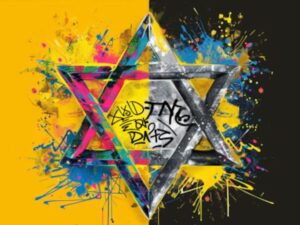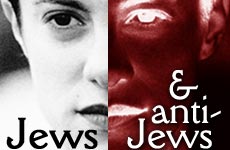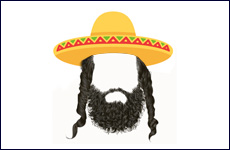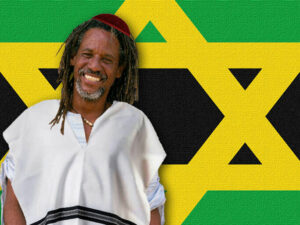The Wizard of Oz and the Jews
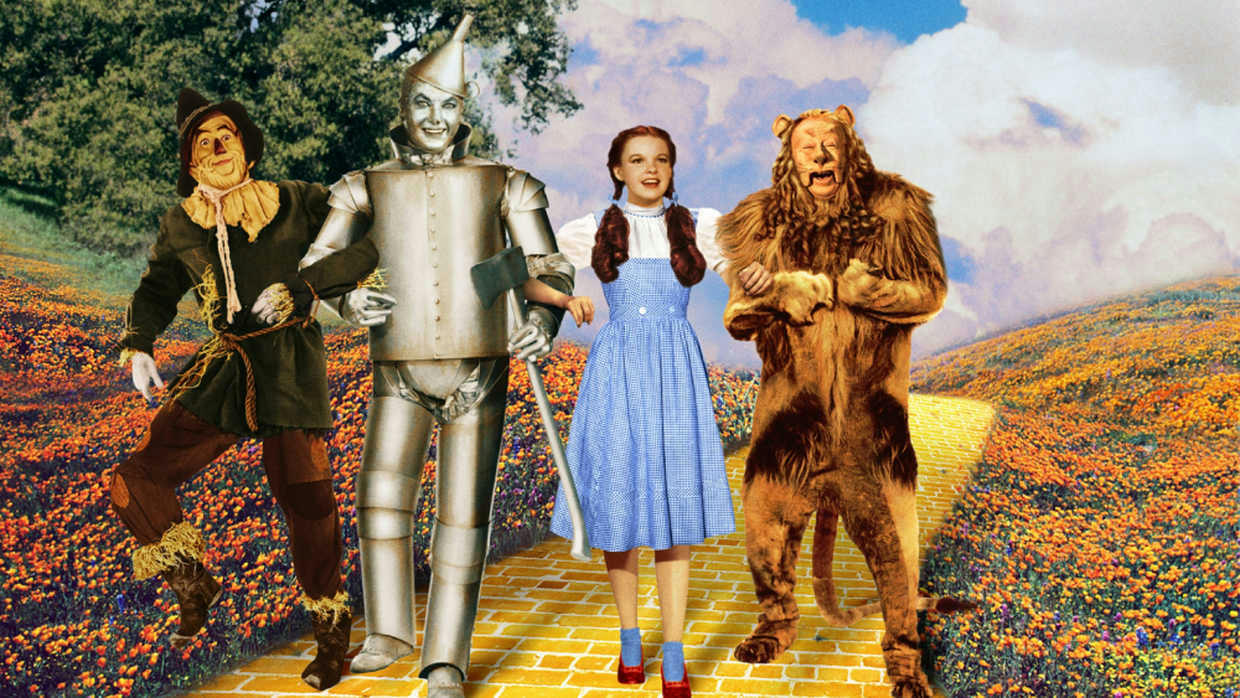
TRENDING
6 min read
Behind the magic of The Wizard of Oz lies a story of Jewish pain, hope, and creativity—from its antisemitic author to the Jewish artists who transformed it into an immortal anthem of longing for home.
Visitors to Las Vegas are raving about The Wizard of Oz at the Sphere, an immersive experience that reimagines the beloved film with cutting-edge special effects—a life-size tornado, flying objects, and a fresh soundtrack. “Who hasn’t wanted to walk down that Yellow Brick Road themselves?” asks Oscar-nominated producer Jane Rosenthal, who helped bring this dazzling new version to life.
Her latest project introduces The Wizard of Oz to a new generation of theatre-goers, some of whom may be surprised to learn that the film was created largely by Jewish artists—and is infused with Jewish themes.
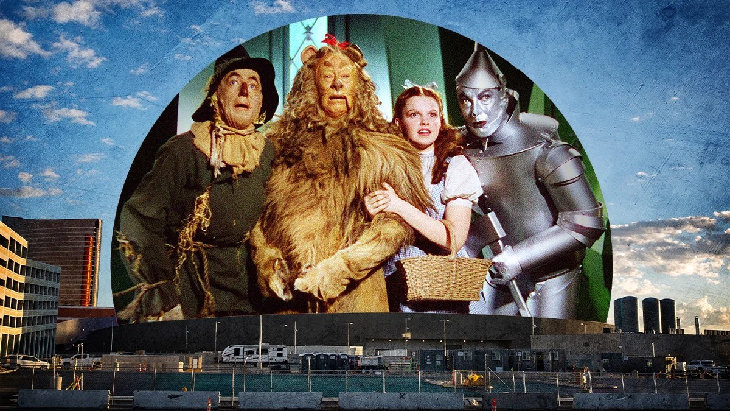
Creating The Wizard of Oz—and Hating Jews
Journalist and writer L. Frank Baum published The Wonderful Wizard of Oz in 1900, followed by 13 sequels. Although billed as fantastical tales for children, historians note that Baum’s work reflected the politics of the 19th-century Populist movement.
Scholar Henry Littlefield argued that the story served as an allegory for the era’s bitter battles between “Gold bugs,” who supported the Gold Standard, and “Silverites,” who advocated backing U.S. currency with both silver and gold. Westerners like Baum, who lived in South Dakota, supported the latter. In Baum’s original books, Dorothy’s slippers are silver, and she walks a gold path toward a Washington-like city ruled by a befuddled leader. The Tinman represents factory workers; the Scarecrow stands in for downtrodden farmers; and the Cowardly Lion is widely seen as William Jennings Bryan, a politician who championed farmers and the lower classes.
Baum himself insisted the book was “pure inspiration.” (That same year he also published The Art of Decorating Dry Goods Windows and Interiors—a far less popular work.) In a 1939 interview, Baum suggested he had received inspiration from a higher being while writing Oz.
This idea fit with Baum’s eccentric religious leanings. He and his wife Maude converted from Methodism to Theosophy, an occult movement founded by Russian mystic Helena Blavatsky. Blavatsky’s writings were steeped in antisemitism, portraying Jews as “semi-human” and describing Judaism as a “religion of hate and malice.”
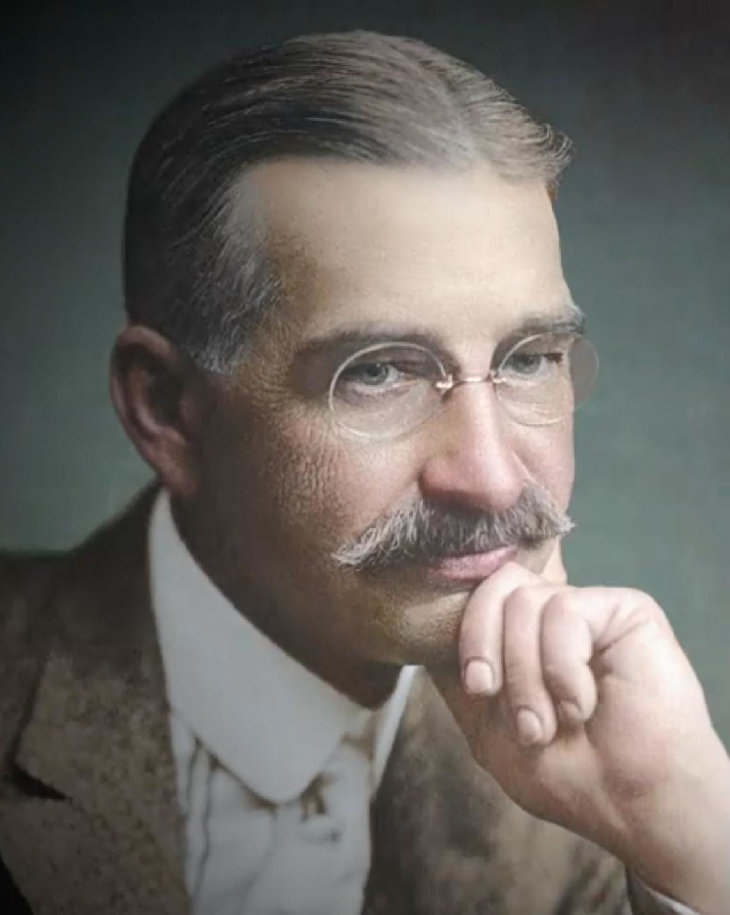 L. Frank Baum
L. Frank Baum
Even before embracing Theosophy, Baum displayed virulent prejudice. As editor of the Saturday Pioneer newspaper in Aberdeen, South Dakota, in 1890, he called for the “annihilation” of Native Americans, writing after the massacre at Wounded Knee: “Wipe these untamed and untamable creatures off the face of the earth.” Even by the standards of his time, Baum’s racism was extreme. (In 2006, his descendants formally apologized to the Sioux people.)
Not surprisingly, elements of these views seeped into Baum’s Oz books. Over the years, publishers removed the most offensive passages, leaving the sanitized versions familiar to modern readers.
Jewish Artists Create The Wizard of Oz
Despite Baum’s antisemitism, the Oz series became a runaway success, selling millions of copies. In the 1930s, Metro-Goldwyn-Mayer adapted it into a Hollywood blockbuster—crafted largely by Jewish talent.
Composer Harold Arlen (born Hyman Arluck in Buffalo, 1905) grew up in a devout Jewish family; his father was a cantor, and young Arlen sang in synagogue. He went on to write the film’s unforgettable score, including the Academy Award–winning “Somewhere Over the Rainbow.”
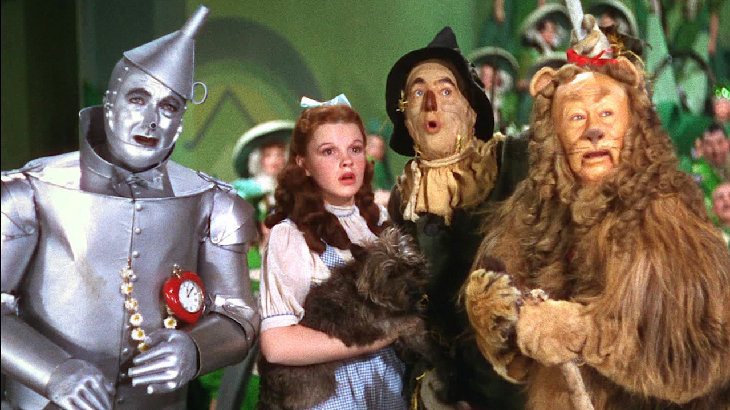
Lyricist E.Y. “Yip” Harburg (born Isadore Hochberg) was the son of Russian Jewish immigrants on New York’s Lower East Side. After losing everything in the 1929 crash, he turned his passion for lyrics into a career—encouraged by his friend Ira Gershwin. Harburg, always socially progressive, later faced blacklisting during the McCarthy era. Among his earlier hits was the Great Depression anthem Brother, Can You Spare a Dime?
The screenplay was created by a largely Jewish group of writers: Herman Mankiewicz grew up in an observant Jewish household in New York City and worked as a journalist, including for a Jewish newspaper, before turning to screenwriting. He was an outspoken critic of Nazism both in his journalism and in his screen work. Irving Brecher grew up in a Jewish home in the Bronx and wrote for the Marx Brothers before joining the Wizard of Oz team. Herbert Fields came from a prominent Jewish songwriting family; his father was the famous vaudeville performer Lew Fields (born Moses Schoenfeld). Samuel Hoffenstein was born in Odessa and moved to the United States, where he became a popular film writer and poet.
Perhaps the most recognizable Jewish figure in the film was Bert Lahr (born Irving Lahrheim), who played the Cowardly Lion. Raised in a loving Jewish home in New York, Lahr became a beloved comedian whose trademark Brooklyn accent added charm to the role.
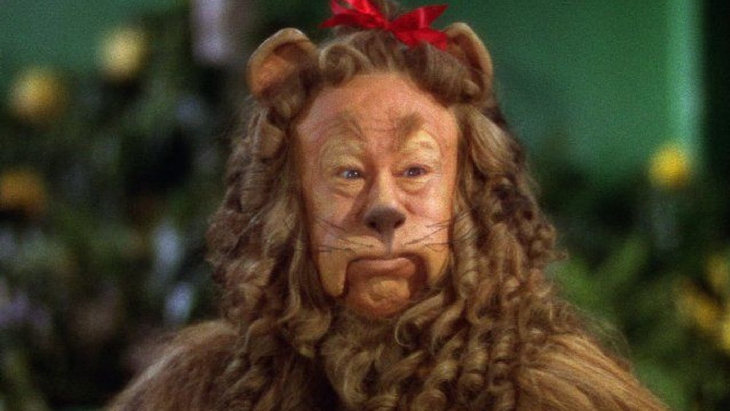
Longing for Home—Somewhere Over the Rainbow
The film’s emotional power came in part from the deep anxieties its Jewish creators were experiencing. The Wizard of Oz premiered on August 25, 1939—just days before Nazi Germany invaded Poland. As Arlen, Harburg, Mankiewicz, and others labored on the film, they watched in anguish as relatives in Europe faced persecution and being attacked during Kristallnacht. Their work channeled both desperation and hope, lending the film an enduring resonance.
Dorothy’s desperate attempts to escape the Wicked Witch of the West mirrored the plight of Jewish families trapped in Europe. Her longing to return “home” echoed Jewish liturgy and the yearning to return to the Land of Israel.

The song Somewhere Over the Rainbow carried particular Jewish resonance. Its poignant line “a land that I heard of once in a lullaby” is thought to draw inspiration from Rozhinkes mit Mandlen (“Raisins and Almonds”), a famous Yiddish lullaby written by Abraham Goldfaden in 1881. That haunting song, describing a mother rocking her child while foretelling hardship and exile, urged Jews never to forget their homeland. The parallel is striking—and moving.
Relevance Today
The promise of finding safety, home, and goodness resonates as powerfully today as it did in 1939. In 2014, the Jewish singer Pink performed Somewhere Over the Rainbow at the Oscars. Her mother, Judith Kugel, later reflected that the song captured the longing of its Jewish creators during the rise of Nazism: “I wasn’t thinking about the movie,” she recalled, “I was thinking about the lost Jews of Europe and the immigrants in the United States, and celebrating our struggle for survival in every community and every country where we live, always with the idea of bringing something better to this world.”
With the reimagining of The Wizard of Oz at the Sphere, a new generation is being introduced not only to a classic film, but also to its profound Jewish legacy.




